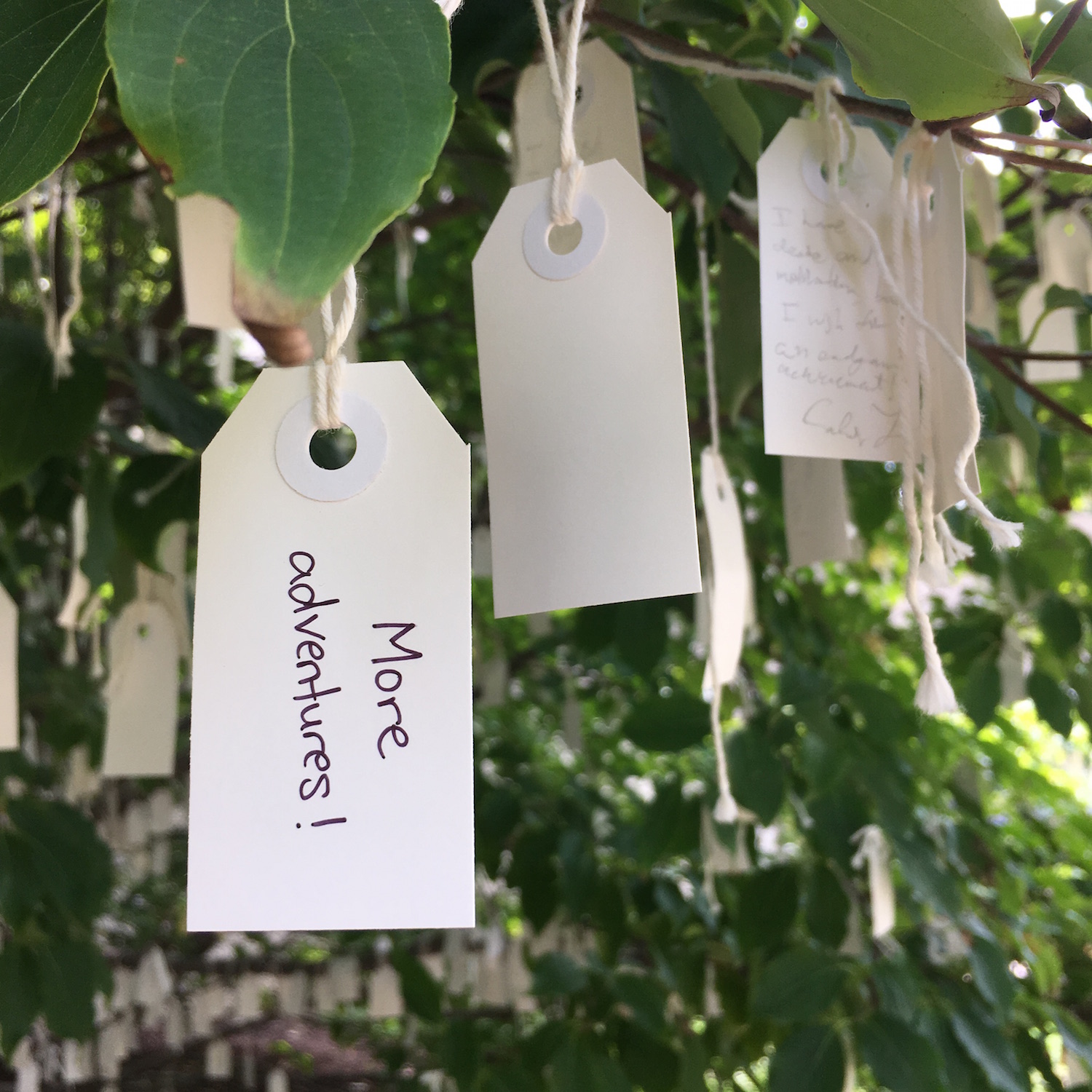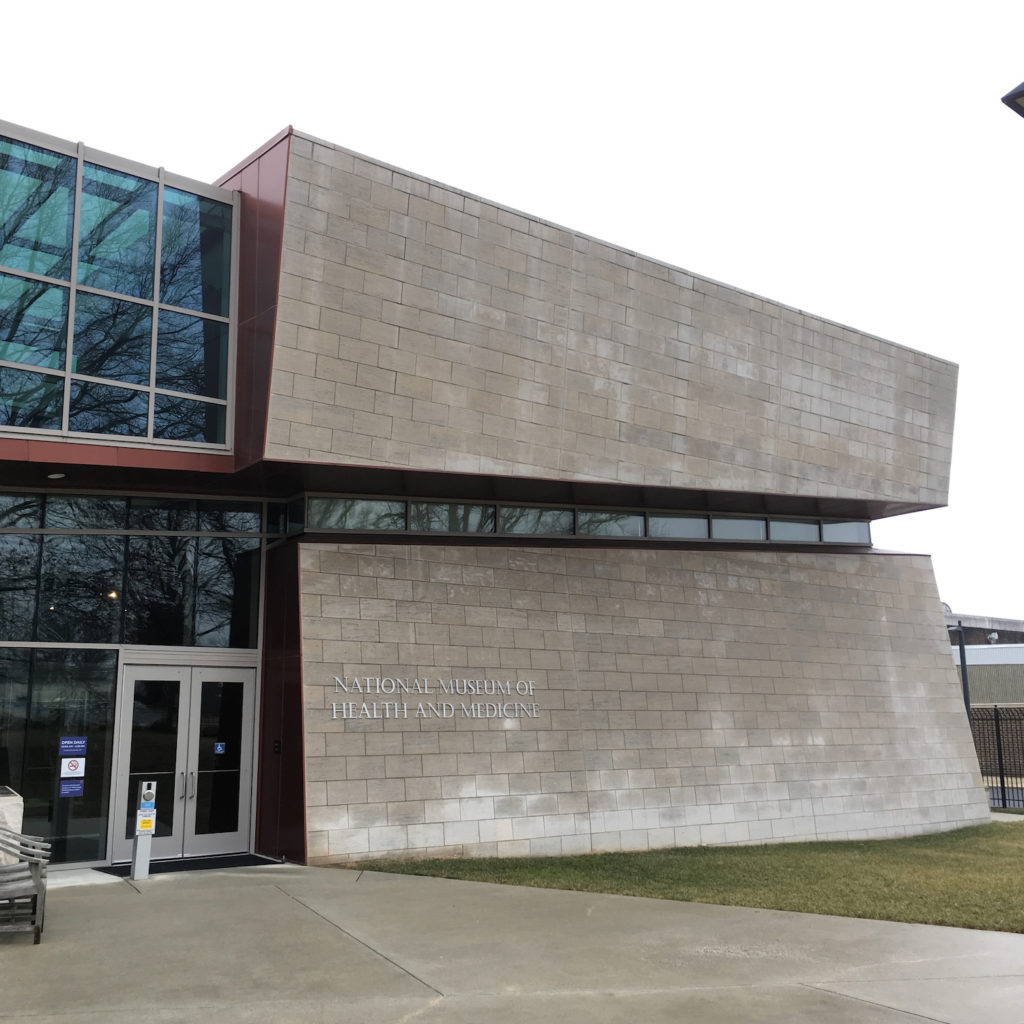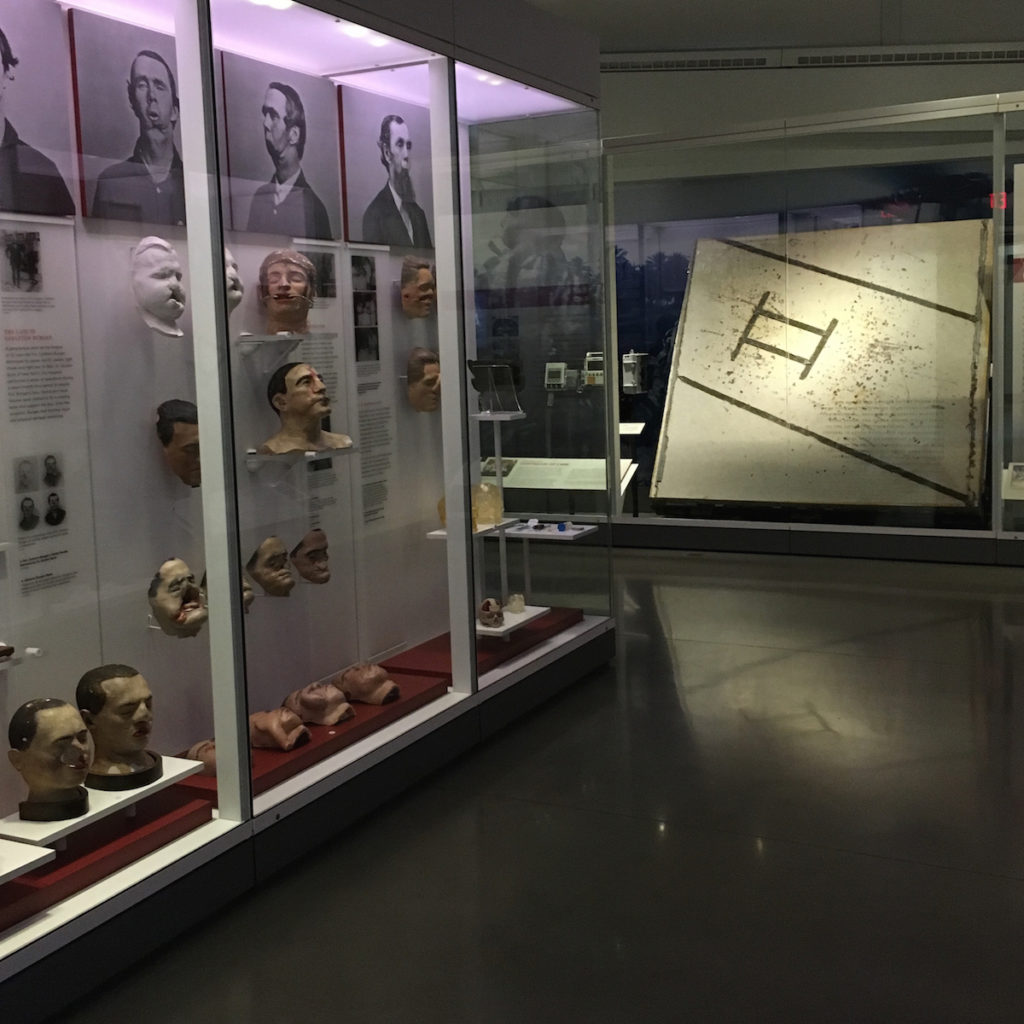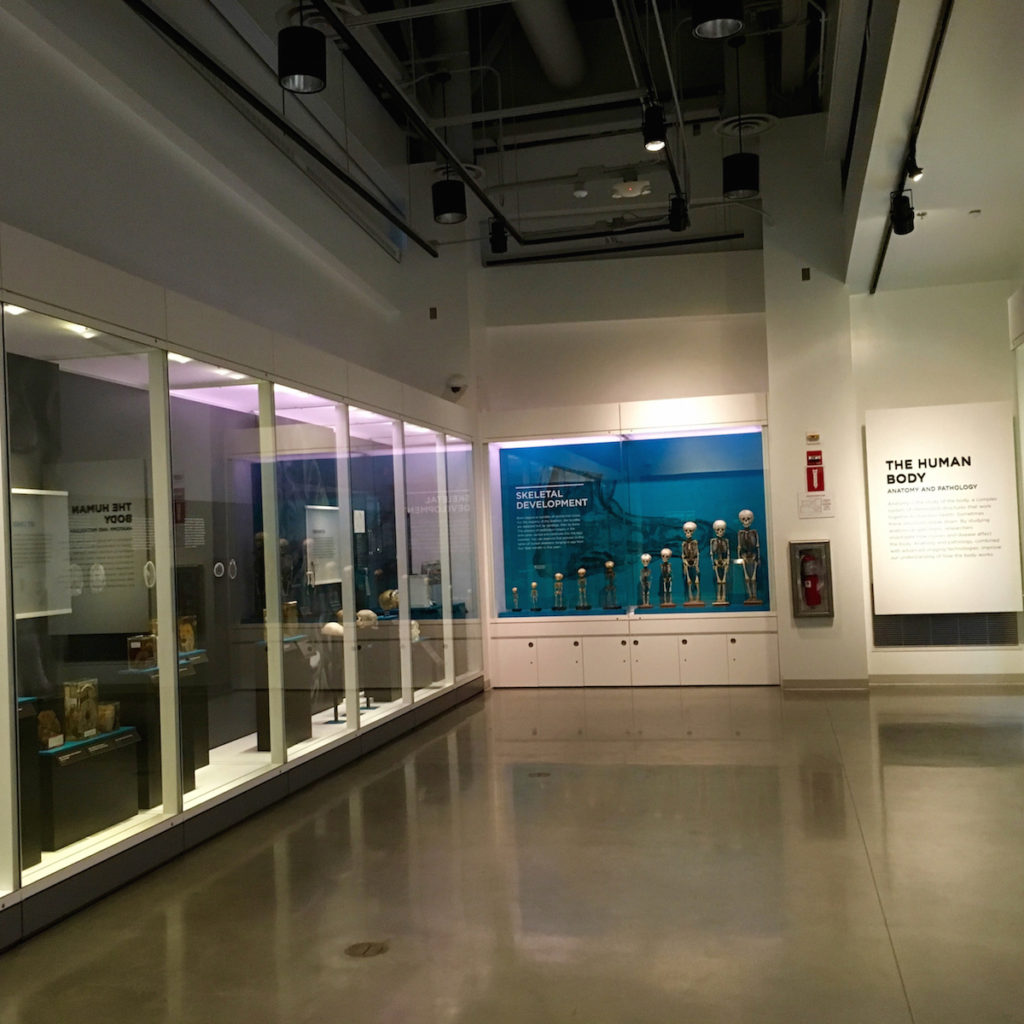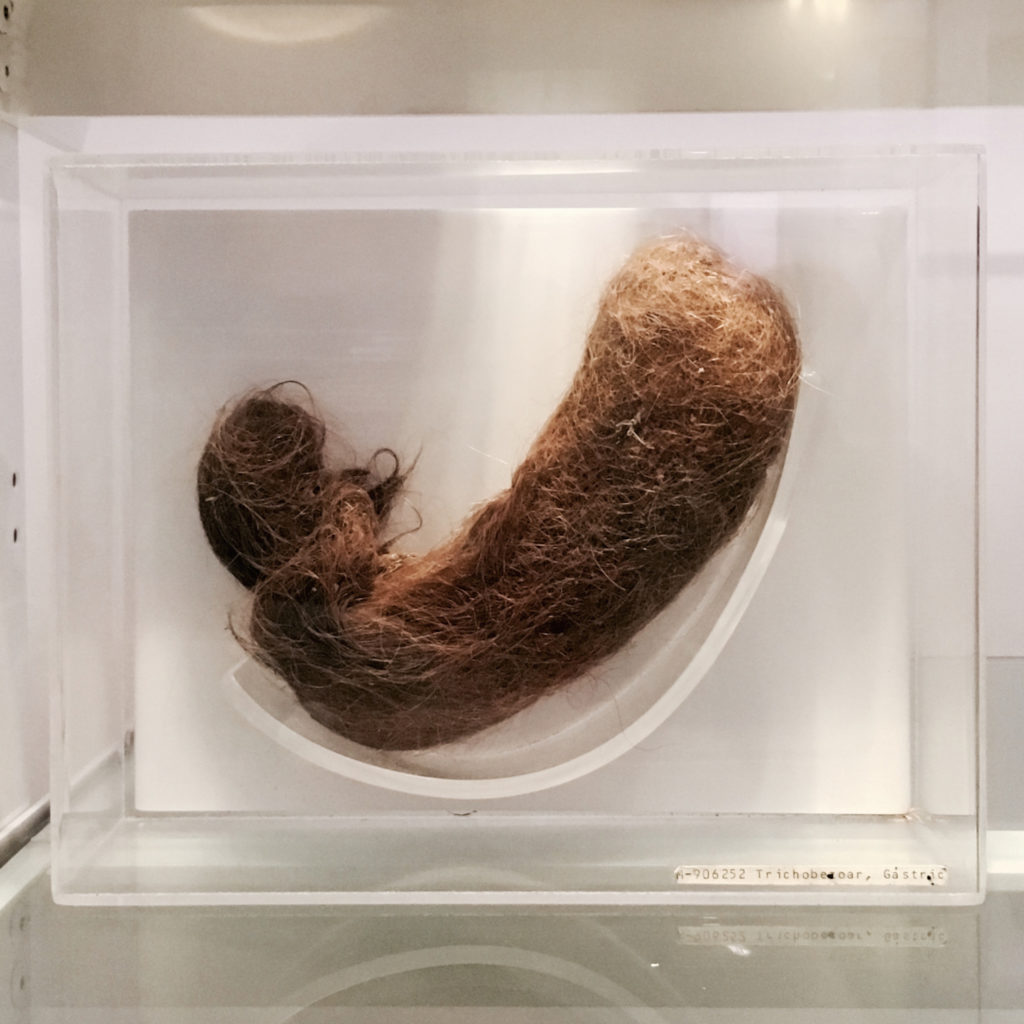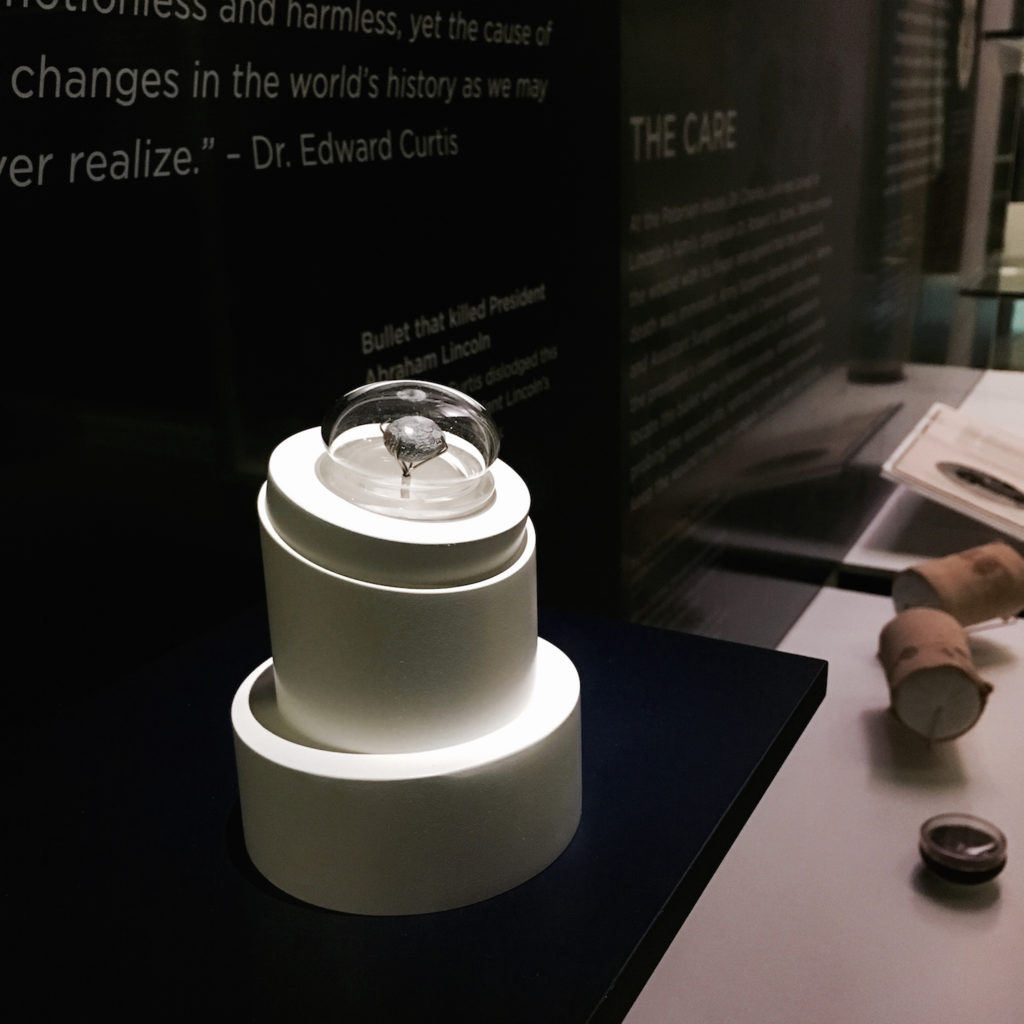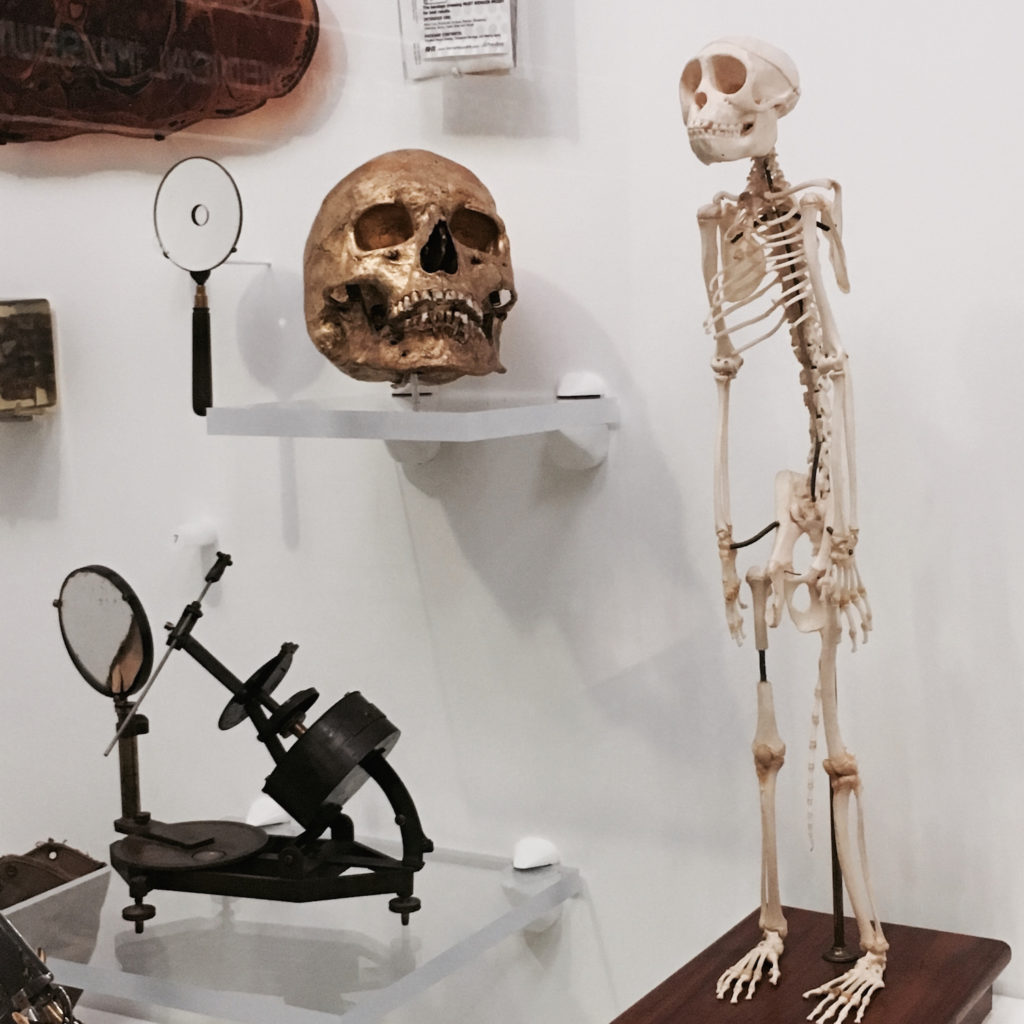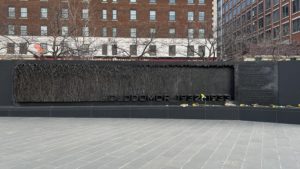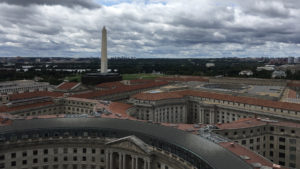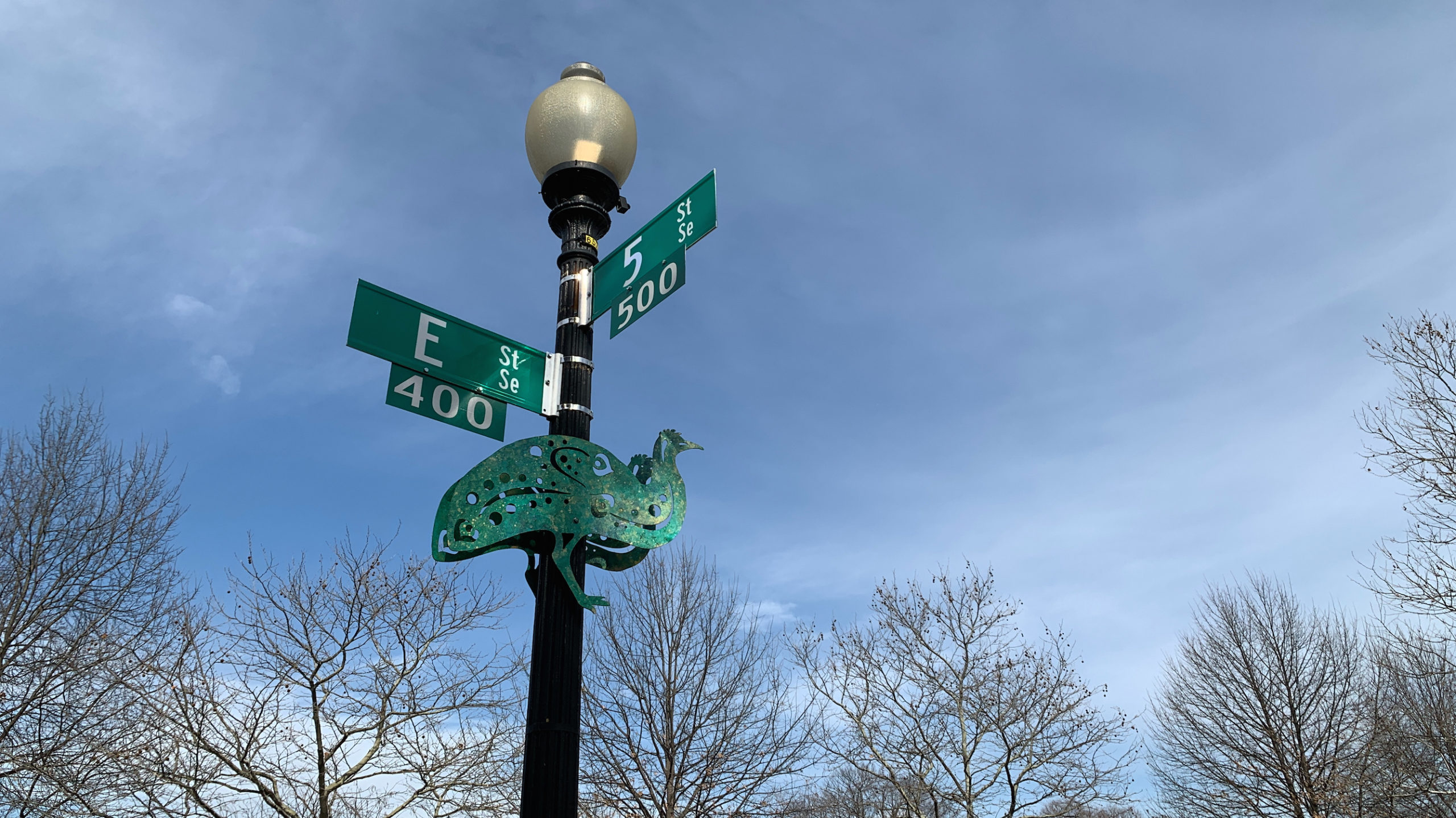National Museum of Health and Medicine
The National Museum of Health and Medicine has a collection of odd and interesting medical specimens
The National Museum of Health and Medicine (NMHM) has three rooms of exhibits focusing on military medicine, anatomy and pathology, and interesting highlights from the collection. It was founded during the Civil War as a collection for research in military medicine, and the museum’s background as an Army Medical Museum is evident in the collection.
This museum is off the beaten path, about a mile from the closest metro stop and in a residential neighborhood. Parts of the walk are not very pedestrian-friendly, but there isn’t much traffic to worry about. The museum is hard to see from the road, so be prepared to track its location using the map on your smartphone. Although the NMHM website says they will check visitor IDs when entering the museum, I did not experience this. Bring your ID with you just in case, though.
The museum itself is quite small, and even the most interested visitor who read everything would have a hard time spending an hour here. It is rarely busy, which also allows you to move quickly through the exhibits.
Although several reviewers online have warned that the displays are graphic or not for those with weak stomachs, I did not find them to be much more so than other museums with skeletons and preserved specimens.
One of the odd specimens on display is a Trichobezoar. Although the name sounds like something from Harry Potter, this is a human hairball in the shape of a stomach that was removed from a 12-year-old girl who had a hair-eating compulsion. Gross and fascinating, like many of the other objects on display.
The most high-profile part of the collection is the bullet that killed President Abraham Lincoln. It was removed from his brain during autopsy and is now on display here along with some of his skull fragments.
The presentation of the specimens is understated and often requires comparing a number by the display with a list of artifacts on a card. This makes it easy to miss items that are of historic importance or scientific interest, like the skeleton of Able, a rhesus monkey who was one of the first American animals to survive spaceflight.
The layout of the museum is confusing with the explanation of some exhibits being farthest from the door where visitors enter, leaving you not knowing what you’re looking at. In addition, the provided map is either out of date or inaccurate. The artifacts from Lincoln’s assassination, for example, are in a different part of the room than indicated on the map. The exhibit space is small, so this is frustrating, but not a major obstacle.
This museum is probably most of interest to Civil War buffs or medical historians who can provide their own context for the museum’s displays. For the casual visitor like myself, I wouldn’t recommend making a special trip, but it may be worth stopping by if you are in the area.
Like this adventure? Subscribe to the newsletter to get updates with the latest adventures on the blog, ideas for things to do in DC, and tips for exploring the District.
Address
2500 Linden Lane, Silver Spring, MD
Metro Station
- Forest Glen (RD)
- Silver Spring (RD)
Accessibility
The National Museum of Health and Medicine is fully accessible. Loaner wheelchairs are available at the information desk.
Cost
Free
Hours
Open daily from 10:00 am – 5:30 pm
Length of Adventure
45 minutes
